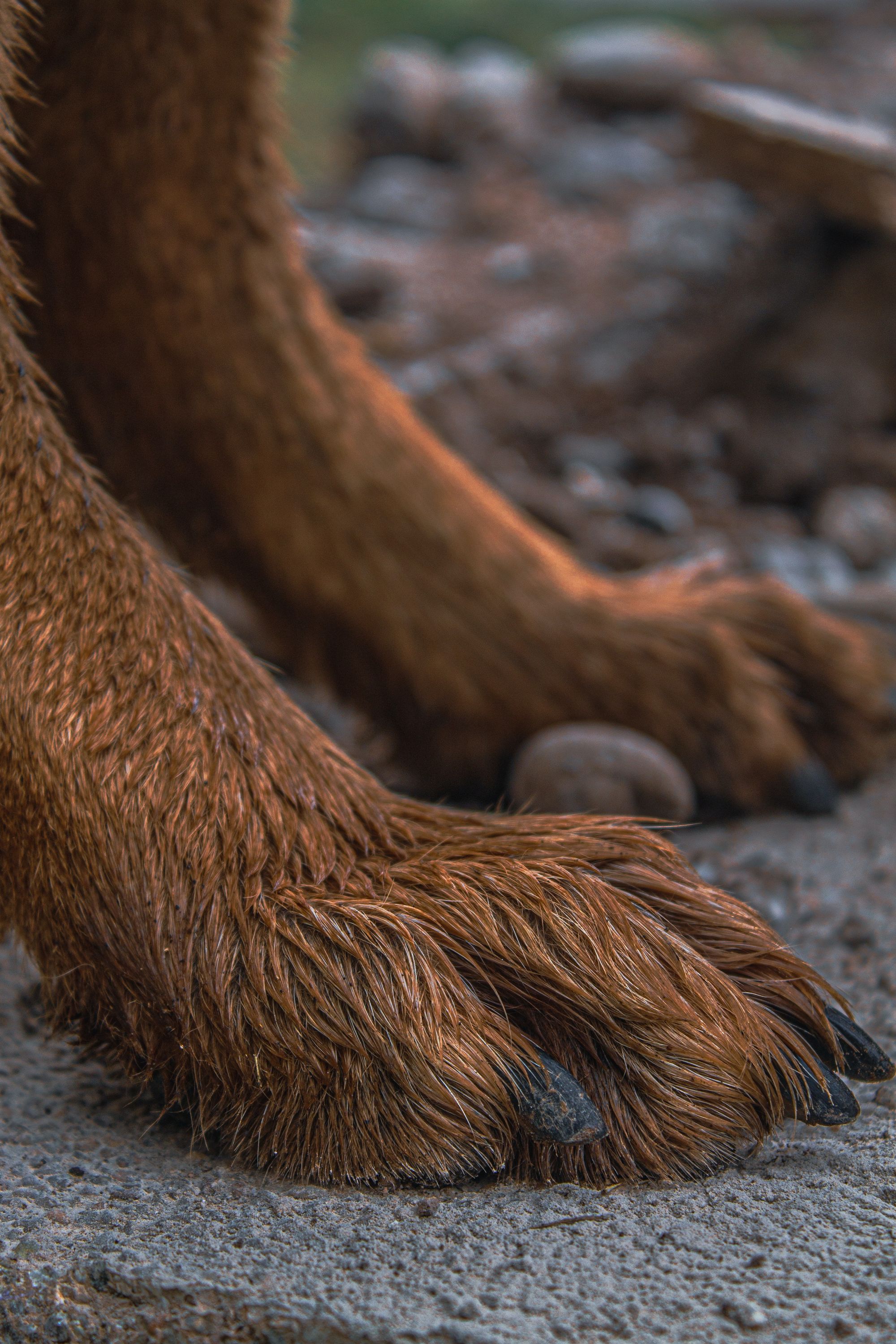Winter can be a challenging season for dog owners, as the cold weather brings potential hazards to their furry friends, especially their delicate paws. It is crucial to take precautions and protect your dog's paws during this time to prevent various winter-related paw problems. Understanding the importance of protecting dog paws in winter is the first step towards ensuring the well-being of your canine companion. Common winter paw problems for dogs include frostbite, dry and cracked pads, chemical burns from ice melt products, and irritation from snow and ice balls.
Fortunately, there are several measures you can take to keep your dog's paws safe and healthy during the winter season. This includes using dog boots, applying paw balm or moisturizer, trimming the fur around the paws, using paw wax or protective spray, avoiding salted or chemically treated surfaces, and rinsing and drying your dog's paws after walks. There are home remedies that can offer some level of protection to your dog's paws during winter.
To ensure your dog's comfort and well-being, it is essential to pay attention to the signs that indicate their paws need protection. By taking these necessary precautions, you can keep your furry friend happy and healthy throughout the winter season.
Key takeaways:
- Protecting dog paws in winter is crucial: Harsh winter conditions can lead to frostbite, dry and cracked pads, chemical burns, and irritation from snow and ice balls, causing pain and discomfort for dogs.
- Use protective measures like dog boots, paw balm, and trimming fur: These measures can prevent paw damage and provide insulation and moisture to keep dog paws safe and healthy during winter.
- Avoid salted or chemically treated surfaces: These surfaces can cause chemical burns and discomfort to dogs' paws. Rinsing and drying your dog's paws after walks can also help remove any potentially harmful substances.
Why is Protecting Dog Paws in Winter Important?
Protecting dog paws in winter is crucial to ensure their well-being and health. It is important to understand why protecting dog paws in winter is important. The cold weather can be harsh on their paws, leading to injuries such as frostbite and cracked pads. Taking steps to protect their paws prevents these issues and keeps them comfortable. Providing them with warm booties or wax-based paw protectors creates a barrier against the cold and ice. Regularly checking their paws for any signs of damage or irritation is also important. By prioritizing the protection of their paws, you can help your furry friends enjoy winter activities without any discomfort or pain.
What are the Common Winter Paw Problems for Dogs?
As winter sets in, dog owners face the challenge of protecting their furry friends' paws from common winter paw problems. From frostbite to dry, cracked pads, as well as chemical burns from ice melt products and irritation caused by snow and ice balls, our canine companions are vulnerable to a range of issues. In this section, we will dive into the various winter paw problems that dogs can encounter, shedding light on the potential dangers and offering insights on how to mitigate these risks.
Frostbite
Frostbite, a common winter paw problem for dogs, occurs when extremities are exposed to extreme cold for prolonged periods. Recognizing signs of frostbite, such as discoloration, swelling, or blisters on your dog's paws, is crucial. To protect your dog's paws from Frostbite, consider using dog boots or applying a protective wax or spray. It is important to avoid walking on salted or chemically treated surfaces and to rinse and dry your dog's paws after walks. Pro-tip: Consider using pet-friendly ice melt products to prevent Frostbite and chemical burns.
Dry, Cracked Pads
Dry, cracked pads are a common winter paw problem for dogs. To protect your dog's paws from this issue, follow these steps:
1. Moisturize: Apply a paw balm or moisturizer to keep the pads hydrated and prevent dryness and cracked pads.
2. Trim fur: Trim the hair around the pads to prevent ice and snow buildup, which can lead to irritation and cracked pads.
3. Use protective wax or spray: Apply a paw wax or protective spray before going outside to create a barrier against cold and harsh surfaces and prevent cracked pads. Learn how to protect dog paws in winter.
4. Avoid salted areas: Salt and ice melt products can be harmful to your dog's paws, so avoid walking on these surfaces to prevent cracked pads.
5. Rinse and dry: After walks, rinse your dog's paws with warm water and dry them thoroughly to remove any irritants or moisture that can cause cracked pads.
By following these steps, you can protect your dog's paws from becoming dry and cracked, preventing the problem of cracked pads during the winter months.

Chemical Burn from Ice Melt Products
Chemical burns from ice melt products can be a common winter paw problem for dogs. These products contain harmful chemicals like salt and deicers, which can cause irritation and burns on your dog's paws. Protecting your dog's paws from these chemicals is crucial. Here are some ways to prevent chemical burns from ice melt products:
1. Use dog boots: They provide a physical barrier between your dog's paws and the chemicals, preventing chemical burn from ice melt products.
2. Apply paw balm or moisturizer: It helps to keep their paws moisturized and protected, reducing the risk of chemical burn from ice melt products.
3. Trim the fur around the paws: Long fur can collect chemicals and cause irritation, including a chemical burn from ice melt products.
4. Use paw wax or protective spray: They create a protective layer on the paws, shielding them from chemical burn caused by ice melt products.
5. Avoid walking on salted or chemically treated surfaces: Opt for alternative routes or use paw protectors to minimize the chances of chemical burn from ice melt products.
6. Rinse and dry your dog's paws after walks: This helps to remove any residue of ice melt products and prevent further irritation, including chemical burns.
Remember, prevention is key. By taking these precautions, you can protect your furry friend from chemical burns caused by ice melt products during the winter months.
Irritation from Snow and Ice Balls
Irritation from snow and ice balls can be a common problem for dogs in winter. To address this issue and prevent irritation from snow and ice balls, here are some helpful tips:
- Trim the fur around your dog's paws regularly to minimize the formation of ice balls and reduce irritation.
- Regularly check your dog's paws for any signs of irritation or the formation of ice balls.
- After taking your dog for walks, it is important to rinse your dog's paws with warm water to melt any snow or ice and eliminate irritants.
- To prevent further irritation, make sure to thoroughly dry your dog's paws after rinsing.
- Consider using a protective paw wax or spray, which acts as a barrier against snow and ice, to further protect your dog's paws.
Pro-tip: One way to soothe and protect your dog's paws from the harsh winter elements is by applying a paw balm or moisturizer. This can provide additional comfort and protection against irritation caused by snow and ice balls.
How to Protect Your Dog's Paws in Winter?
During the winter months, our furry friends need extra care and attention to keep their paws safe and healthy. In this guide, we'll explore effective ways to protect your dog's paws in winter. From using dog boots to applying paw balm, we'll cover various methods to shield their delicate pads from cold weather conditions. We'll share tips on grooming their paws and avoiding potentially harmful surfaces. Let's ensure our loyal companions stay comfortable and protected throughout the winter season.

Use Dog Boots
Using dog boots is an effective way to protect your dog's paws during the winter.
- Insulation: Dog boots provide insulation from cold surfaces, preventing frostbite and discomfort.
- Protection: Dog boots shield paws from harsh chemicals in ice melt products, reducing the risk of chemical burns.
- Traction: The rubber soles on dog boots provide better traction on slippery surfaces, preventing slips and injuries.
- Comfort: Dog boots provide a barrier against snow and ice balls, minimizing irritation and discomfort.
- Easy to clean: Dog boots are easy to clean and can be quickly dried after walks, ensuring hygiene and preventing infections.
Apply Paw Balm or Moisturizer
Applying paw balm or moisturizer, such as the one specifically designed for dogs, is an essential step in protecting your dog's paws during winter. Here's a list of steps to follow:
- Choose a paw balm or moisturizer specifically designed for dogs.
- Apply a generous amount of the balm or moisturizer to your dog's paw pads.
- Gently massage the balm or moisturizer into the paw pads to ensure complete coverage.
- Pay extra attention to any dry, cracked, or irritated areas of the paw pads.
- Repeat the application daily or as needed, especially after walks or exposure to cold surfaces.
Trim the Fur Around the Paws
Trimming the fur around your dog's paws is an essential step in protecting their paws during the winter. Here are some steps to follow:
- Gently brush the fur around the paws to remove any tangles or mats.
- Use grooming scissors with rounded tips to carefully trim the fur. Be cautious to avoid cutting your dog's skin.
- Trim the fur around the paw pads and in between the toes. This helps prevent snow and ice buildup.
- Make sure to trim the fur evenly and not too short.
- If your dog has long hair, consider using a pet-safe paw wax or protective spray to add an extra layer of protection.
By trimming the fur around your dog's paws, you can effectively trim the fur around the paws and prevent snow and ice from accumulating, reducing the risk of frostbite and irritation.
Use Paw Wax or Protective Spray
Using paw wax or protective spray is an effective way to safeguard your dog's paws during winter.
- Use Paw Wax creates a barrier between your dog's paws and the harsh elements, providing protection from snow, ice, and salt.
- Protective spray acts as a protective layer, preventing ice and snow from accumulating and causing discomfort.
- Ensure to apply the wax or spray before each walk and reapply as needed.
Pro-tip: Before applying paw wax or protective spray, make sure your dog's paws are clean and dry to maximize its effectiveness.
Avoid Walking on Salted or Chemically Treated Surfaces
To protect your dog's paws in winter, it is crucial to avoid walking on salted or chemically treated surfaces. These substances can cause irritation, burns, and dryness. Instead, opt for walking your dog in areas where salt and chemicals are not used, such as parks or sidewalks that are regularly cleared of ice and snow. If it's unavoidable, consider using protective gear like dog boots to shield your dog's paws from contact with these harmful substances. By taking these precautions, you can ensure the well-being and comfort of your furry friend during the winter season.
Fun Fact: Did you know that a dog's paws have specialized pads that act as insulation against cold surfaces?

Rinse and Dry Your Dog's Paws after Walks
- After taking your dog for a walk in winter, it is crucial to rinse and dry your dog's paws to prevent any potential issues.
- Here's a step-by-step guide on how to do it effectively:
- Prepare a basin of lukewarm water.
- Gently place your dog's paws in the water and use a soft cloth or sponge to clean off any dirt, salt, or chemicals.
- Dry their paws thoroughly using a clean towel.
- Pay special attention to the areas between the toes and pads.
Remember, a pro-tip is to massage a paw balm or moisturizer onto their paws after drying to keep them hydrated and protected.
Are There Any Home Remedies for Protecting Dog Paws in Winter?
Are There Any Home Remedies for Protecting Dog Paws in Winter? There are several home remedies that can help protect your dog's paws during the winter months:
- Apply a protective paw balm or wax to create a barrier against salt, ice, and other harsh substances.
- Keep the hair between the paw pads trimmed to prevent ice balls from forming.
- Use dog booties or socks to provide extra insulation and protection.
- Rinse your dog's paws with warm water and dry them thoroughly after walks to remove any salt or chemicals.
Remember, it's important to monitor your dog's paws regularly and consult with a veterinarian if you notice any signs of irritation or injury.
How to Know if Your Dog's Paws Need Protection?
To determine if your dog's paws need protection during winter, consider the following indicators:
- Extreme temperatures: If it's freezing outside, your dog's paws are at risk of frostbite or burns from hot pavement.
- Salt and chemicals: Take note of whether your area uses chemicals or salt to melt ice. These substances can irritate your dog's paws.
- Paw inspection: Regularly check your dog's paws for any cuts, cracks, or signs of discomfort.
- Behavior changes: If your dog starts limping, licking their paws excessively, or avoiding walking, it may indicate paw pain.
- Paw pad condition: Dry, cracked paw pads suggest that protection is needed.
How to Choose the Right Winter Gear for Your Dog's Paws?
When it comes to protecting your dog's paws in winter, knowing how to choose the right winter gear is essential for their comfort and safety.
- To ensure a snug fit for the winter boots, measure your dog's paw size.
- When selecting the boots, consider the material - opt for water-resistant and insulating options to keep your dog's paws dry and warm.
- To provide traction on icy or slippery surfaces, choose boots with a non-slip sole.
- When it comes to the closures of the boots, it's recommended to go for velcro or buckle closures as they are easier to put on and take off.
- Prior to heading outside, test the boots on your dog indoors to ensure they are both comfortable and secure.
Last winter, my dog Max slipped on an icy surface and injured his paw. Determined to prevent this from happening again, I researched and carefully selected winter boots for him. By choosing the right gear, Max's paw remained protected throughout the winter, and we enjoyed many safe and joyful walks in the snow.

Some Facts About How to Protect Dog Paws in Winter:
✅ Cold weather can be harmful to dogs' paws, causing dryness, chapping, cracking, and even frostbite. (Source: Our Team)
✅ Chemicals and salt used for de-icing can also cause irritation, chemical burns, and salt burns on dog paws. (Source: Our Team)
✅ Paw injuries can occur from stepping on sharp objects hidden under the snow. (Source: Our Team)
✅ Poisonings can happen if dogs lick toxic substances off their paws, such as antifreeze or de-icing salt. (Source: Our Team)
✅ Slippery ice can result in slips, falls, and injuries, especially for pets with arthritis. (Source: Our Team)
Frequently Asked Questions
- How can I protect my dog's paws during the winter?
- During the winter, it is important to protect your dog's paws from wintertime health concerns, such as sharp ice, snow clumps, and chemical exposure. One way to do this is by using dog snow boots, like Muttluks Original Fleece-Lined Winter Dog Boots or Kurgo Blaze Cross Dog Shoes, which offer full coverage and protection against cold temperatures, slips and falls, and salt exposure. Another option is to keep your dog's paw pads moisturized with dog paw wax or balm to minimize dry skin and irritation.
- Are there any sensible precautions I should take for my short-haired dog breed during winter?
- Short-haired dog breeds are more vulnerable to the cold weather, so taking sensible precautions is essential. Consider using dog snow boots, like Muttluks Trackers All Season Dog Boots or Kurgo Blaze Cross Dog Shoes, to provide an impenetrable barrier against sharp ice, snow, and chemical exposure. Additionally, make sure to keep your dog's paw pads moisturized with dog paw wax or balm to prevent dry skin. Consider using a coat or jacket to provide added warmth during walks in inclement weather.
- How do I protect my dog's paws from sharp objects hidden under the snow?
- Protecting your dog's paws from sharp objects hidden under the snow is crucial to avoid paw injuries. One effective measure is to use dog snow boots, such as Muttluks Original Fleece-Lined Winter Dog Boots or Kurgo Blaze Cross Dog Shoes, which provide a protective layer between your dog's paws and the ground. These boots are made from durable and waterproof materials, offering full coverage and reducing the risk of stepping on sharp objects. Additionally, you can wipe down your dog's paws with a towel after walks to remove any snow or ice that may be clumped between the paw pads and fur.
- How can I prevent my dog from licking toxic substances off their paws?
- To prevent your dog from licking toxic substances, such as de-icing salt or antifreeze, off their paws, there are a few precautions you can take. First, avoid areas with de-icing agents whenever possible. If you must walk in these areas, consider using pet-safe ice melters. Additionally, regularly wash your dog's paws with lukewarm water and a mild pet-safe soap after walks to remove any salt crystals or other chemicals. This reduces the chances of your dog ingesting harmful substances and experiencing digestive upset. Keeping your dog's paw pads moisturized with dog paw wax or balm can also deter licking.
- How can I minimize the risk of slips and falls on slippery ice?
- To minimize the risk of slips and falls for your dog, especially if they have arthritis or struggle with balance, there are a few precautions you can take. First, consider using dog snow boots that offer traction, such as Muttluks Trackers All Season Dog Boots or Kurgo Blaze Cross Dog Shoes. These boots provide a nonslip sole and help your dog maintain stability on slippery ice. Second, limit the duration of walks in harsh winter weather and avoid icy areas if possible. Lastly, wipe down your dog's paws with a towel after walks to remove any ice or snow that may have accumulated and further reduce the risk of slipping.
- How can I make DIY paw balm to protect my dog's paws?
- Making DIY paw balm at home is a cost-effective way to protect your dog's paws during winter. Here's a simple recipe you can try:
- Mix one part coconut oil with one part shea butter in a microwave-safe bowl.
- Heat the mixture in the microwave until it melts, stirring occasionally.
- Add a few drops of vitamin E oil and lavender essential oil to the melted mixture for added benefits and scent.
- Pour the mixture into small containers and let it cool and solidify.
- Apply a small amount of the DIY paw balm to your dog's paws before walking on snow or ice to minimize dry skin and salt damage. Reapply after walks to keep the paws soft and supple.

